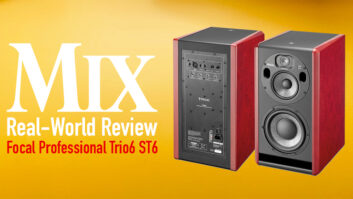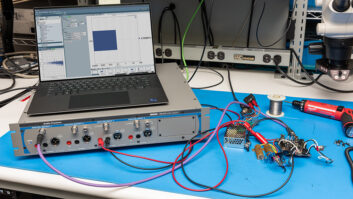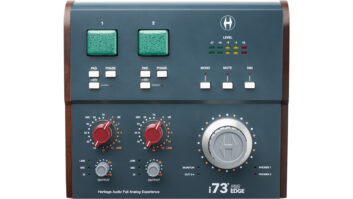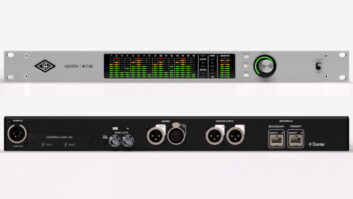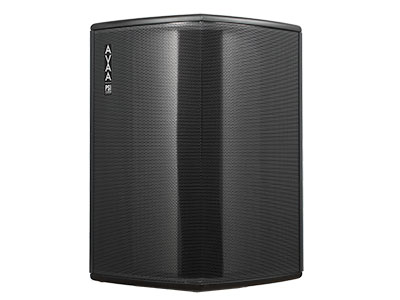
Switzerland-based PSI Audio adds the Active Velocity Acoustic Absorber C20 to its inventory of high-end studio and audiophile speakers. The AVAA is an active broadband absorber that suppresses low-frequency reflections between room boundaries—walls, floors and ceilings—and is intended to work best along with passive midrange and high-frequency acoustic treatments. The AVAA C20 is most effective between 15 to 120 Hz and does not affect upper frequencies at all.
Correction Needed
In small mix rooms, midrange and high-frequency passive velocity absorber treatment panels work well to reduce flutter echoes and to adjust the room’s RT-60 decay time above 300 Hz. But the wavelengths of the low frequencies are longer than the room’s physical dimensions and cannot be reproduced in the room without reflecting axially back and forth between rigid and non-moving parallel boundaries—walls, floor, and ceiling. Without proper bass trapping to lessen the severity of the inherent modal issues in small rooms, the bass frequencies are uneven, indistinct, and tend to mask the clarity of the upper frequencies at the same time.
To absorb down to 20 Hz would require a porous absorber ideally up to 4.3 meters thick and would have to be incorporated within the room’s initial wall construction. This is not an option in small project/home studios and theaters that are usually conversions within pre-existing structures.
How It Works
The AVAA C20 measures 424x509x300 mm (WxHxD) and looks like a wedge-shaped powered monitor speaker with a metal protective front screen. The AVAA emits no sound or “anti-noise” and does not impact the direct sound of your speakers or other sources in the room itself. The AVAA works like a passive velocity absorber but is more efficient, takes up much less space and is designed to work in conjunction with your existing, passive acoustic room treatments. A single AVAA has a 0.2 square meter surface area and will provide up to 20 times the equivalent absorbent area—4 square meters.
The AVAA C20 uses an all-analog, patented design to increase the acoustic impedance of the air by acting as a pressure “sink” at the boundary(s) where it is placed.
Within the unit’s MDF cabinet is an omnidirectional pressure gradient microphone mounted in front of a sheet of stainless steel perforated with 0.15mm-wide slots. This perforated sheet presents an acoustic resistance that allows a sound wave’s pressure component (what our ears hear) not to pass and build up in front of what PSI calls the “Silent Chamber.” However, the velocity component of sound (the air molecule movement) passes freely through the slots into the chamber.
This movement of air needs to be compensated for to keep minimal acoustic pressure inside the chamber. This is achieved using a reactive membrane, or piston velocity transducer, in the back wall of the chamber. The membrane is a 21cm woofer driver used in the company’s A21 powered monitor loudspeaker.
The microphone “tracks” the pressure in front of the perforated sheet and sends a bandpass filtered signal to a super-fast slew rate Class-A/B power amplifier. In response to this signal, the amplifier/membrane system reacts instantly and attempts to keep the pressure low by sucking air velocity into the front of the AVAA.
Installing two AVAAs is the minimum requirement for left/right symmetry, and multiple AVAAs will provide coverage in larger rooms. Each room installation is situational and varies with the room’s size and geometry. A certain amount of experimentation is required for optimum performance.
Minimum room size is 10 square meters and my mix room plus adjoining living space is bigger. I mix music in a small alcove that measures: 2.9×2.4×5.8 (WxHxL) meters with the left sidewall ending at 2.2 meters and opening up into my living room area. However, up until that point, the left and right side walls are symmetrical up to the listening position.
I have passive absorption panels of various thicknesses placed on almost every surface, and at the point of over-absorption that can cause rooms to sound dull and lifeless. But I still have modal issues due to the low-frequency reflections and buildups.
I experimented with placing the AVAAs. Through trial and error and many comparative measurements using Room EQ Wizard, by far the best places were on the floor with one AVAA in each of the front left and right corners.
Each AVAA is a little more than 1 meter away from my left and right ADAM S2.5A monitors up on Sound Anchor stands and 1.5 meters away from my Mackie MR10Smk3 powered subwoofer placed on the floor equidistant between the ADAMs.
The AVAAs turn on with a toggle switch on the back, and you can hear a slight “thump” with a green LED lighting up through the front grille. There is nothing to adjust except for a Sensitivity control to reduce its affect in highly reflective rooms, but for 99 percent of the time I set it to the maximum or “Cal” position.
I’m Sold
The effect of the AVAAs is dramatic and not subtle! The bass became instantly tighter, more defined and evenly balanced throughout the entire space and out into my living room.
The AVAAs flattened out the subsonic range from 50 Hz downward like huge bass traps that couldn’t possibly fit into my room. With the low end controlled, I was able to dial in my subwoofer’s location, level and crossover frequency properly. I immediately noticed less masking of the midrange and high frequencies, and the measurable differences in RT60 times, phase shift in the bass, and group delay is remarkable.
At another larger project studio with non-parallel walls and existing passive treatments, I tried just one AVAA on the front wall, and it produced a noticeable, measurable change.
With my two AVAAs running I arrive at a mixes faster with much less of a struggle to get the low and low midrange frequencies correct for bass, kick and drum sounds. Mixes translate even better now, and stereo imaging is more exact, with each pan position clearly locked in the stereo field. L/R reverb tails, midrange detail, and effect levels are more clearly heard and in proper perspective.
The AVAAs are the crowning touch to my small space’s large set of acoustic treatments. Getting the low frequencies to sound correct has always been a puzzling mystery in small mix rooms. My pair of AVAA C20s is awesome as a portable problem solver, and my mix room has never sounded better!
Product Summary
COMPANY: PSI Audio
WEBSITE:www.psiaudio.com
PRODUCT: PSI Audio Active Velocity Acoustic Absorber C20
PRICE: $1,999 (Distributed by Zen Audio Pro)
PROS: Excellent plug-and-play, low-frequency correction for small mix/edit rooms.
CONS: Expensive.

